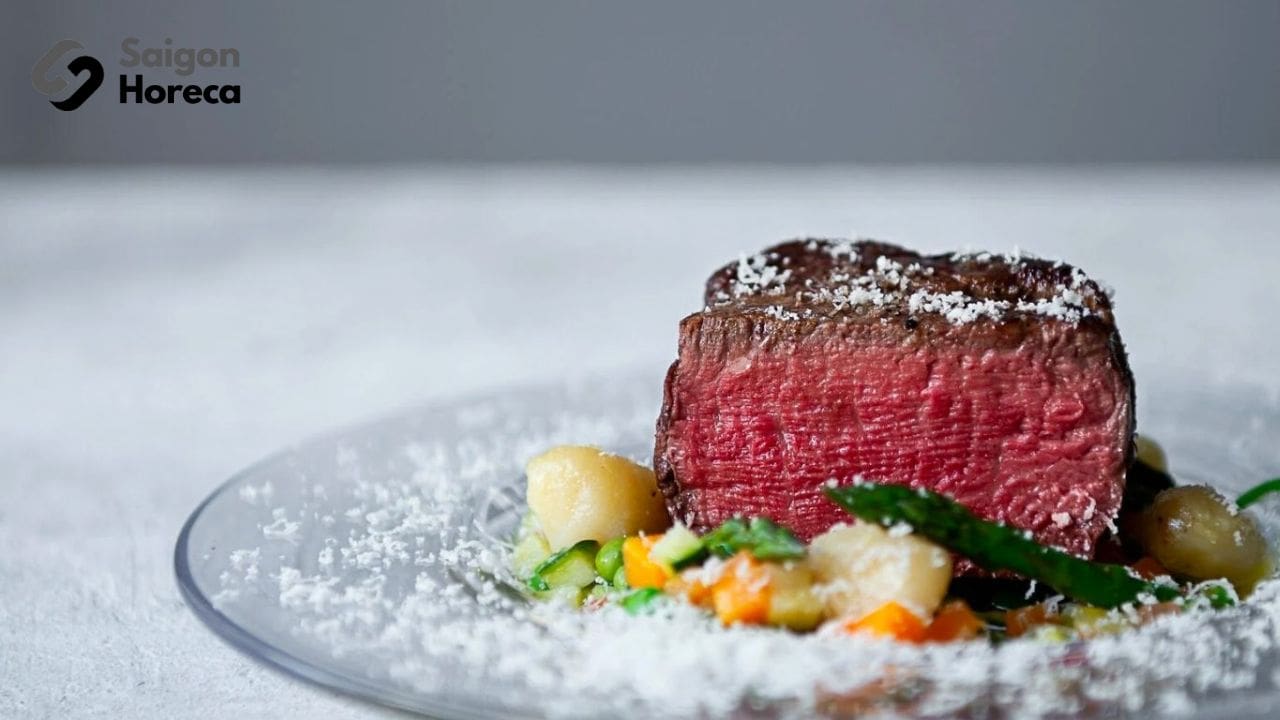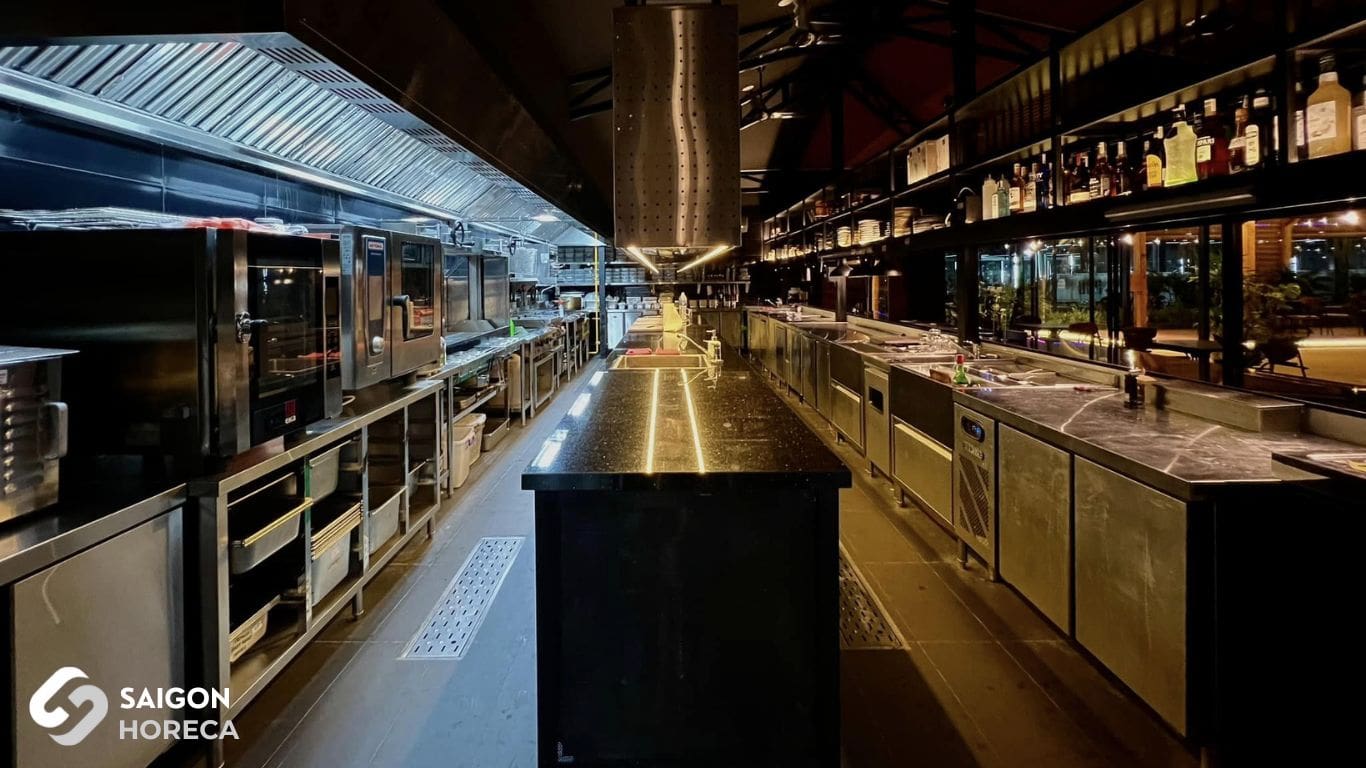In the context of the rapidly growing culinary and food service industry, investing in industrial kitchen equipment for a canteen […]
Read More
- Kitchen Equipment by Business Model
Sous Vide: A Unique Cooking Technique and Its Valuable Benefits
- October 17, 2023
If you’re seeking an engaging method to delve into the world of culinary art or wish to share unique gastronomic experiences with friends, don’t overlook the concept of Sous Vide. It’s an intriguing cooking approach that holds the promise of delivering delectably moist and succulent meats and foods without the hassle of concerns about overcooking, burning, or precise cooking durations. While it may sound like a culinary wonder, in actuality, Sous Vide is a contemporary and cutting-edge cooking technique that predominantly utilizes water. Let’s explore how it operates and how you can harness its full potential in the realm of gastronomy.
In this article
What Is Sous Vide?
Sous-vide (pronounced soo-VEED) is a unique and distinctive culinary cooking technique. Firstly, your food is placed in a vacuum-sealed bag or airtight container, then immersed in a pot of water with a consistent and precisely controlled temperature. By using professional sous vide equipment or simply a pot of water and a pump, you can maintain a stable and accurate water temperature throughout the cooking process.

How is Slow Cooking used?
“Sous-vide,” a French term roughly translated as “under vacuum,” is a culinary method of cooking with water that can be applied to various types of food. While it’s not the ideal choice for grilling or searing, it has proven to be highly effective for meats, seafood, eggs, vegetables, and many other items on the culinary menu. The popularity of Sous-vide has grown due to the development of smart kitchen appliances that allow for precise temperature measurement and control, as well as the automation of the cooking process.
It involves two critical steps:
First, the food and any accompanying ingredients are tightly sealed in a vacuum-sealed bag or airtight container. Different methods can be used, such as canning jars, depending on personal preference and the cooking method. The food is then placed in water, usually in a pot or a dedicated Sous-vide appliance, and cooked at an exact temperature for a predetermined period.
However, don’t mistake this for simple boiling or blanching. In reality, food in the Sous-vide process is securely protected from the water, so the water isn’t boiling (unless you want it to). The temperature is typically lower than boiling, usually around 212°F (100°C). This cooking method is all about ensuring consistency and providing some unique benefits that culinary enthusiasts and creative chefs highly value.

Benefits of Slow Cooking Sous Vide
- Good heat retention
- Maximum preservation of nutrients in the food
- Balance and consistency
- Enhanced flavors
- Provides a perfect texture
- Safety
The primary advantage of Sous-vide lies in its absolute temperature control. You can prepare a perfect meal without worrying about water temperature affecting food quality. Moreover, you can cook food for longer periods to achieve optimal moisture without concerns about it becoming overly tender or tough.
Another benefit of Sous-vide is that proteins don’t contract. For instance, with a steak, when cooked at the ideal medium-rare temperature (between 125 and 128°F), the outer layers often become dry and lose moisture. However, with Sous-vide, a steak (or any meat) retains its juiciness and doesn’t lose weight. This makes the dish even more delectable, with a tender, moist interior.
Sous-vide isn’t limited to meat; it works well with various foods like vegetables, eggs, and seafood. You can create unique and flavorful dishes as spices and flavors are well-preserved during the cooking process.
So, if you’re looking to experiment with a creative and high-quality cooking method, consider Sous Vide. It’s an exciting culinary technology that can turn anyone into a professional and innovative chef.
Comparison Sous Vide With Traditional Cooking Techniques
Sous-vide is a unique culinary technology that provides maximum control in the kitchen, enabling the creation of incredibly tender and flavorful dishes. With Sous-vide slow cooking equipment, which Saigon Horeca offers, you can easily achieve restaurant-quality results from start to finish.
Sous Vide Steak vs. Traditional Pan-Seared Steak
Comparing a Sous-vide steak cooked at 129°F with a traditionally pan-seared steak is a clear example of the superiority of Sous-vide. The Sous-vide steak on the left retains its pink hue throughout, with a tender and smooth meat texture. In contrast, the pan-seared steak on the right often has charred edges due to the higher surface temperature of the pan.

Sous Vide Salmon vs. Traditional Salmon
Sous Vide salmon (left) maintains a consistent pink color throughout and has a firm, flaky texture. In contrast, pan-seared salmon (right) often has overcooked edges due to the higher surface temperature of the pan, which also leads to the release of white albumin.

Sous Vide Poached Eggs vs. Traditional Poached Eggs
Whether you’re a perfectionist when it comes to poaching eggs or simply a lover of runny yolks, Sous Vide always ensures you achieve the desired results. The sous vide poached egg on the left is evenly cooked and has a desirable texture. Meanwhile, the traditionally poached egg on the right often results in a runny yolk and overly thick egg whites.

The Sous Vide Cooking Process
To smoothly and effectively carry out the Sous Vide cooking method, follow these steps:
- Start by vacuum-sealing the food discreetly using a vacuum sealing machine. Ensure that you completely remove the air inside the vacuum bag to ensure a tight seal.
- Attach your immersion circulator to your cooking vessel. Options include a deep pot, a Dutch oven, a hotel pan, or a polycarbonate container. In reality, any container with a water-tight interior can be used.
- Next, fill the cooking vessel with water. Make sure there is enough water to completely submerge the food. If you’re unsure, many immersion circulators have water level markings on the surface for reference.
- Submerge the sealed vacuum bag into the water. You can use a sturdy clip to ensure the vacuum bag remains fully immersed in the water.
- Set the precise temperature as required (usually ranging from 125°F to 195°F), set the cooking time, and then activate your Sous Vide machine. The specific cooking time depends on the type of food, but it’s generally safest to allow at least one hour. During this time, you can carry out other kitchen tasks or relax.
Sous Vide Tips and Techniques
Using the Sous Vide method isn’t always difficult, but to become a true expert, consider the following tips and techniques for doing it correctly:
Sear the Food: Contrary to placing the food in water, for many meats, you can grill, smoke, or sear the food slightly after Sous Vide cooking to enhance flavor, texture, and appearance. This creates a caramelized and flavorful outer layer. Occasionally, you can quickly sear the food over high heat for the best results.
Use Just Enough Seasoning: With Sous Vide, you often don’t need as much seasoning as with traditional cooking. Since the food is vacuum-sealed in a bag, it retains flavors better. So, remember to season a bit less than you would with traditional cooking.
Lower the Temperature (and Extend the Time): An advantage of sous vide is that you can cook food at a lower temperature while still ensuring food safety. For example, you can cook chicken at 140°F for an extended period to achieve juicy and safe chicken. This also results in a tender and delicious outcome.
Use the Keep-Warm Feature: Some Sous Vide devices have a keep-warm feature that allows you to maintain food at the ideal temperature without worrying about overcooking. This is a good option if your dinner party is running later than expected.
Patience is Key: Sous Vide requires patience. You can’t quickly check if the food is done as you would with traditional cooking methods. Instead, trust the temperature and time, step away from the kitchen for a while, and relax. The final result will be worth the wait.
>>> You can read more about the Sous Vide Cooking techniques in this article: 12 Successful Secrets of Sous Vide Cooking Technique

How to Choose Quality Sous Vide Equipment and Where to Buy It?
Choosing high-quality Sous Vide equipment is crucial to ensure you have the best cooking experience. At Saigon Horeca, we always aim to provide customers with outstanding experiences and quality products in the field of kitchen and restaurant equipment in Vietnam. At Saigon Horeca, you can find quality sous vide equipment, including standalone Sous Vide machines, immersion circulators, vacuum bags, and related accessories.
When selecting high-quality Sous Vide equipment, there are several important factors to consider:
Temperature Accuracy: A quality Sous Vide device should ensure precise temperature control. This is particularly important as the Sous Vide method relies on temperature control for accurate cooking.
Ease of Use: Choose a sous vide device with a user-friendly interface and ease of operation. Control buttons or mobile apps should be designed to help you set temperature and time easily.
Capacity and Size: Depending on your cooking needs, you can choose a device with a larger or smaller capacity. Consider the size and capability of the equipment to ensure it suits your requirements.
Water Circulation Control: Some devices have features for automatic water heating and circulation, which help maintain a stable and even temperature throughout the entire Sous Vide bath and can improve the quality of your cooking.
Durability and Material: Check the materials and durability of the equipment. High-quality equipment will be made from premium materials and have a long lifespan to ensure long-term use.
User Feedback: Read reviews and user feedback about the equipment you’re interested in to gain a better understanding of its real-world performance.
Price: Compare the prices of different Sous Vide equipment and make sure it fits your budget. Remember that you don’t necessarily have to buy an expensive device to get good quality.
Don’t forget to check for additional features and options, such as Bluetooth or Wi-Fi connectivity for remote control, if those are of interest to you. In summary, choosing high-quality Sous Vide equipment requires considering both performance capability and convenience to ensure it fits your cooking needs and preferences.
Monday - Friday
from 8h00 to 18h00
Số 40 Đường số 6, KDC Melosa Khang Điền, Phú Hữu, HCM.
Contact anytime
In the modern context, a canteen kitchen is not just a place to provide meals for a large number of […]
Read More




